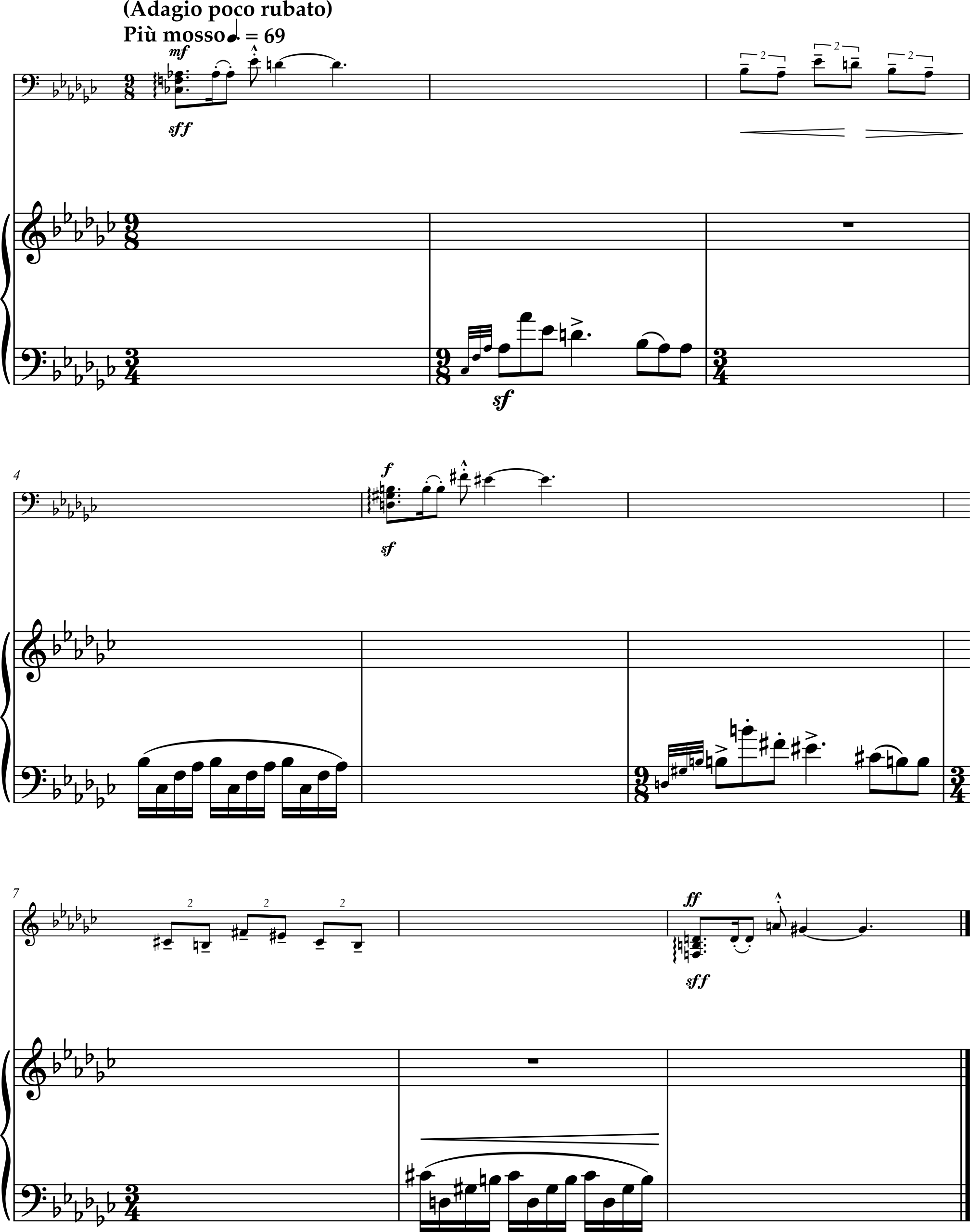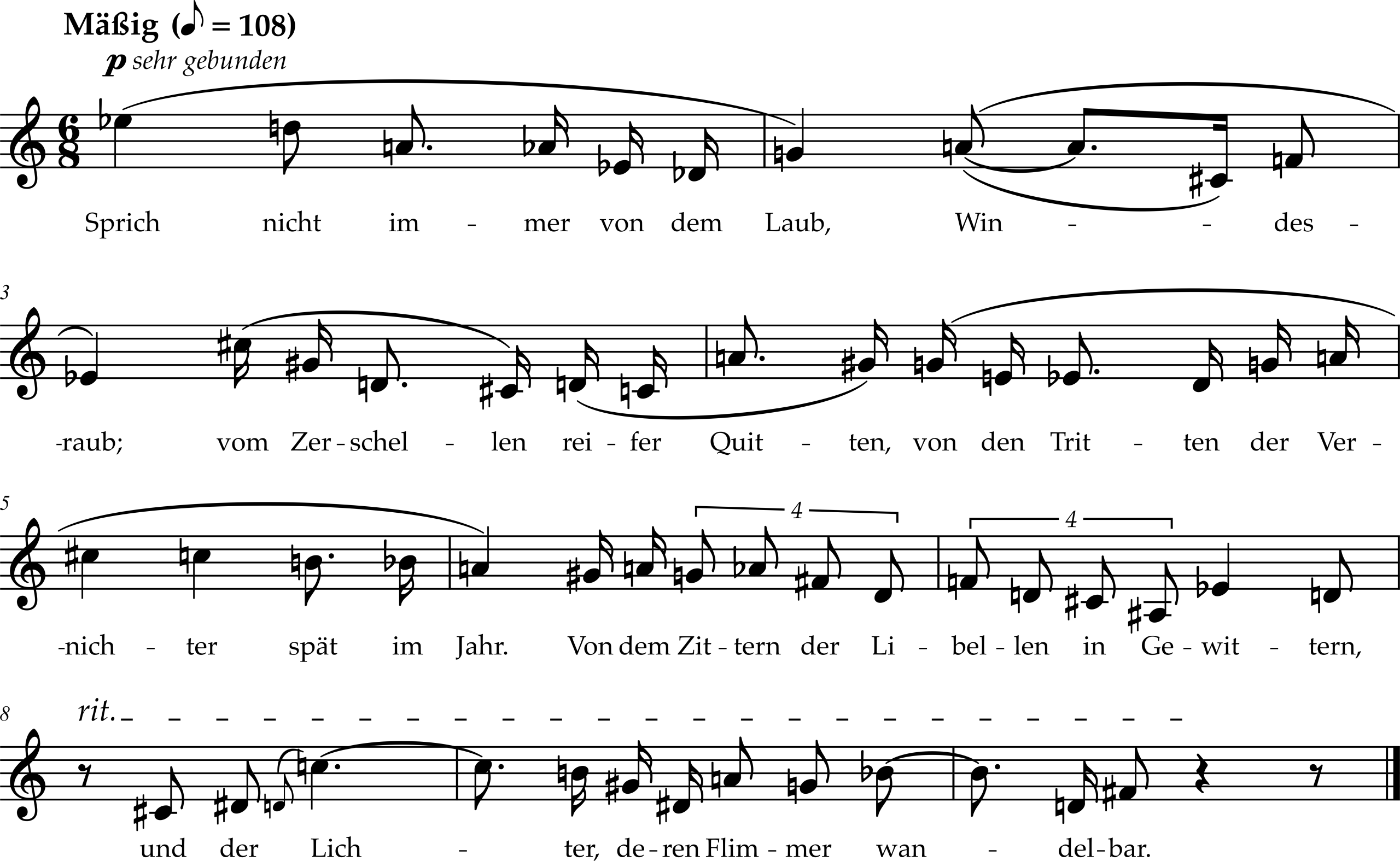A. Beat-Level Quadruplets
A Guided Example
Exercise 8A-1 introduces the primary skill needed to perform accurate quadruplets in compound meter by focusing attention on a specific series of measures in an exercise to be presented in full in the next section. Treat Exercise 8A-1 like a single-line exercise, moving continuously from measure to measure across the three staves. The first two measures establish a dotted-quarter pulse; the third measure divides this pulse into two parts (duplets); and the fourth measure further divides those duplets into two parts, producing quadruplets over the original dotted-quarter pulse. In this particular passage, the quadruplets are notated as sixteenths in 3/4, but quadruplet notation in 9/8 could have been used as well. The process then repeats. Work through this passage several times until comfortable feeling the quadruplets as a subdivision of the duplets.
Once this exercise has been mastered, modify it by omitting the measures with duplets, moving directly from measures with a compound division of the beat to the subsequent measure of quadruplets. While performing the quadruplets, imagine the duplets. That is the basic skill: to move seamlessly from a compound division of the beat to a quadruplet division of the beat that is structured from an imagined duplet. While that skill may not seem strictly necessary yet, it is crucial for accurate performance of 4:3 patterns in the next section.
Exercise 8A-1: Leoš Janáček, Pohádka for Cello and Piano, Movement 2, Guided Exercise

Examples for Application
Once the exercise above has been mastered, try the two exercises below, again thinking duplets while performing the quadruplets.
Note that Exercise 8A-3 features quarter-note quadruplets, which would appear to be large-value quadruplets. While true notationally, the tempo is fast enough that the dotted-half note is felt as the main beat. Thus, the underlying skills is the same as in Exercise 8A-2. Large-value quadruplets above the level of the main beat will be explored in the last section of this chapter. The main additional challenge in Exercise 8A-3 is its further division of the quadruplet to generate a more varied rhythmic pattern.
Exercise 8A-2: Arnold Schoenberg, Book of the Hanging Gardens, “Sprich nicht immer von dem Laub”

Exercise 8A-3: Leoš Janáček, Dumka for Violin and Piano


